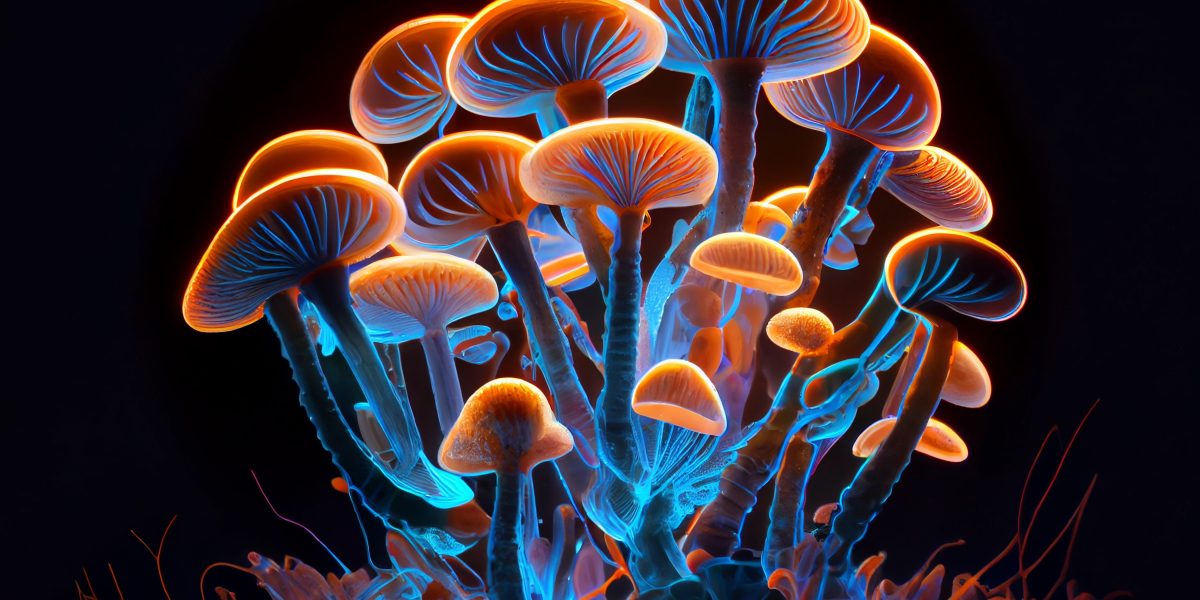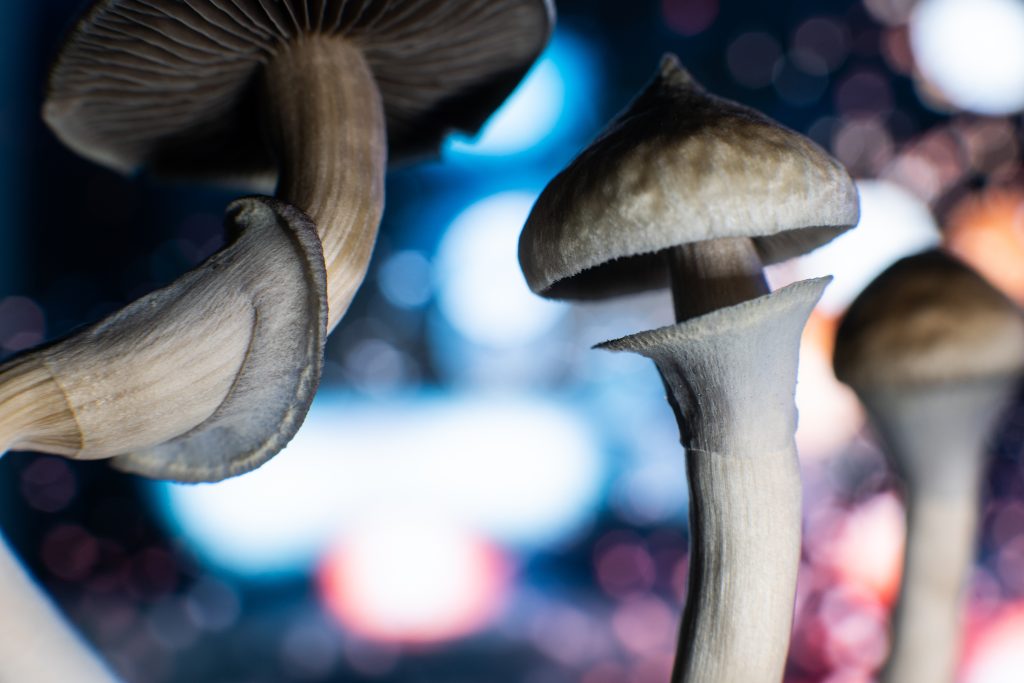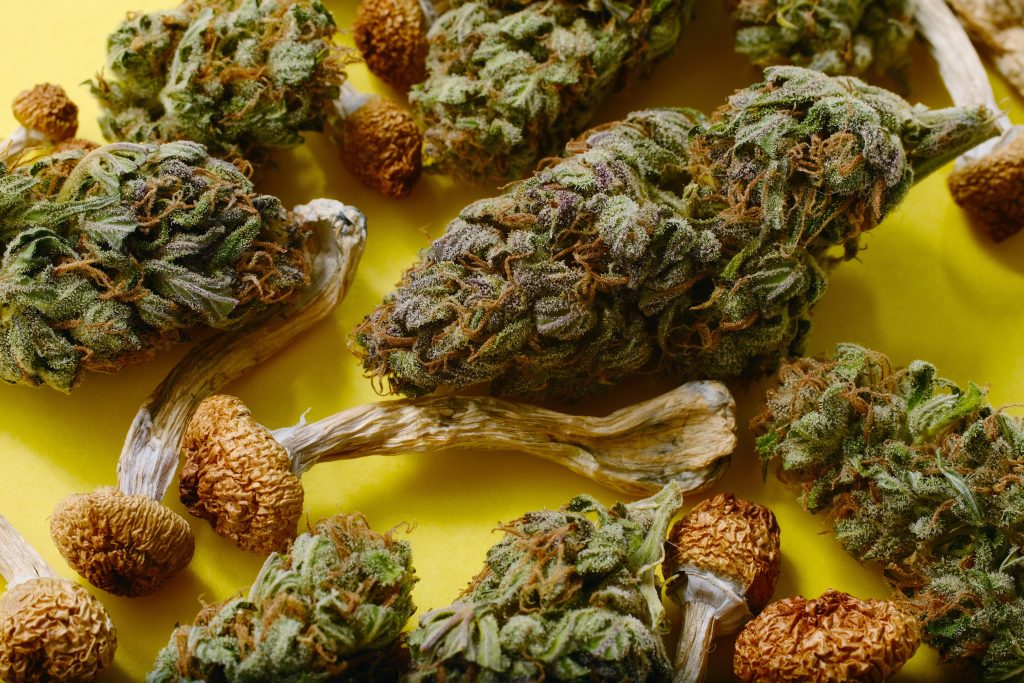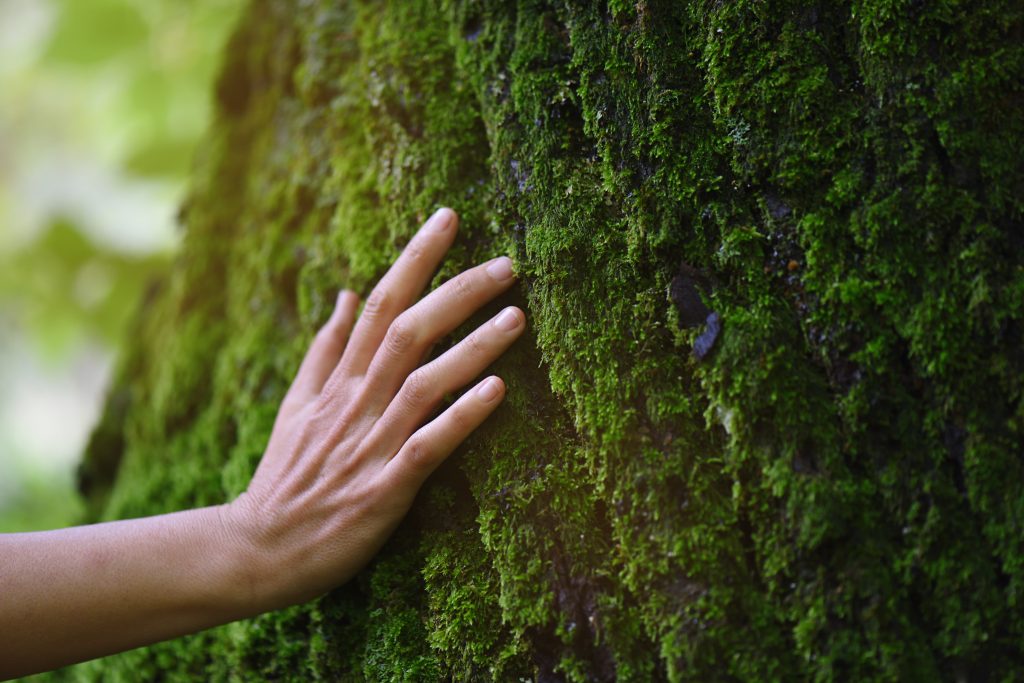
in this article
- Introduction
- Different Potency Levels
- The Entourage Effect
- The Narratives Surrounding Different Psilocybin Mushroom Strains
Are you 18 or older?
Please confirm that your are 18 years of age or older.
You are not allowed to access the page.

Disclaimer: The views and opinions expressed in this article are those of the authors and do not necessarily reflect the official policy or position of the Chemical Collective or any associated parties.
In the natural world, there are more than 200 psilocybin mushroom species (most of these belong to the genera Psilocybe, but psilocybin-producing mushrooms also belong to genera such as Copelandia, Inocybe, and Panaeolus). There are also many different strains, or varieties, of psilocybin mushroom species. Most of these strains belong to the species Psilocybe cubensis. These strains can differ in terms of appearance and potency.
Psilocybin mushroom strains are often given monikers that reflect not only their distinct appearance but also, supposedly, their distinct effects. One example would be Golden Teachers, a popular, moderately potent strain of Psilocybe cubensis. Even when nicknames don’t reflect a distinct subjective effect, growers, sellers, educators, and users often state that a strain, for instance, provides a more introspective or visual experience than another. This is often taken at face value. But is it true? Beyond differences in potency, can a psilocybin mushroom strain, by its very nature, produce a distinct subjective experience?
I aim to show that much of this claim is based on myth. In other words, there is no solid scientific grounding to it.

The first thing to note is that some psilocybin mushroom species are more potent than others. This table shows how different Psilocybe species (e.g. cubensis, azurescens, semilanceata, cyanescens) differ in terms of their psilocybin and psilocin content. (Psilocybin metabolises into the active compound psilocin once ingested; the latter being responsible for psychedelic effects. So taking both psilocybin and psilocin concentrations into account can help us determine the potency of a particular species.)
But what about the potency levels of different strains of psilocybin mushroom? Penis Envy, for example, is typically seen as a highly potent strain. People usually recommend to take half the amount that you would take if you had a milder strain, like Golden Teachers. And this more or less matches people’s experiences. A 0.5 g Penis Envy trip can feel like a 1 g Golden Teachers trip, in terms of intensity. However, Ian Bollinger and Reggie Harris of Oakland Hyphae, a leading organisation in the field of psilocybin mushroom potency testing, have tested the potency of Penis Envy mushrooms. Their results mean we should be cautious about viewing Penis Envy mushrooms as highly potent. Harris told Leafly:
Our data shows that PE tends to perform higher, but it’s random every single time. From the testing we’ve done, PE is, more consistently than not, more potent than other cubensis varieties of mushroom. It comes out a little stronger than your average run of the mill cubensis mushroom.
Also, anecdotally, experiences with Penis Envy are not consistent. The owner of the website Mushly told Leafly, “People say PE [Penis Envy] is three times stronger. But in my personal experience that hasn’t always been the case.” Harris also said, “High numbers don’t always equal a long trip or an intense experience. ‘Big number doesn’t equal good’ is the argument we’re trying to bring to the conversation.” Indeed, your ‘set’ (e.g. expectations, intentions, personality traits) and ‘setting’ (where you trip, what music you listen to, and who you trip with) can all affect the intensity and quality of the experience (more on this later).
Additionally, research published this year found that psilocybin mushroom strains don’t differ that much in terms of potency. As Juan Spinelli notes in an article for Benzinga:
For years, the phrase “a cube is a cube” has been used to downplay the idea that specific Psilocybe cubensis strains offer unique psychedelic experiences. This statement rejects the notion that one strain is inherently better for certain uses, like microdosing or intense trips, emphasizing that the differences are largely superficial.
The study above was a genetic study of 81 different strains. Kevin McKernan et al. found minimal differences between many strains, even when they were sold by different vendors. This underscores how the distinct differences between psilocybin mushroom strains are not as distinct as previously thought. Bollinger told Benzinga,
Strains are often little more than marketing labels. Potency has less to do with the strain itself and more to do with the supporting of the strain. The three major factors that go into a potent mushroom are how you cultivate it, its genetics, and, furthermore, how you treat it afterward.
Regarding this last point, newer cultivation methods are leading to the creation of highly potent batches of psychedelic mushrooms, which is leaving many users unprepared for the subsequent effects.
The ‘entourage effect’ is a postulated effect of cannabis, referring to the idea that various cannabinoids in the cannabis plant work together to produce an overall effect that is more than, or distinct from, the effect of each cannabinoid. The entourage effect can include potentiation (increasing the intensity of the experience), synergy (enhancing the desirable qualities of the experience and therapeutic benefits), and modulation (altering the subjective effects). We know, for instance, that levels of CBD and THC in cannabis strains influence the overall effects.

Nonetheless, Catalina Christensen et al. have examined the evidence available on cannabis and concluded, “Based on the published literature included within this scoping review, it is evident that there is a lack of sound evidence supporting the existence of the proclaimed Cannabis-related entourage effect.”
While research underlines that CBD helps to reduce the potential negative effects of THC (e.g. paranoia, anxiety, and psychotic-like symptoms), other researchers expressed scepticism towards the idea that different concentrations of other cannabinoids produce a so-called entourage effect. On the other hand, despite a lack of concrete evidence on the matter, users remain adamant that the entourage effect is real, and this effect is used in marketing efforts in the cannabis industry.
We find a similar story in the case of psilocybin mushrooms. This is because these mushrooms contain compounds other than psilocybin and psilocin, including baoecystin, norbaeocystin, and aeruginascin – with both species and strains containing varying levels of each. Thus, an entourage effect has been proposed to occur when people consume different species and strains of psilocybin mushrooms. But again, the evidence on a mushroom-related entourage effect is not clear or conclusive.
A study published in Molecular Psychiatry this year showed that a psilocybin mushroom extract (which includes a range of compounds) produced a different effect in people than chemically synthesised psilocybin. A press release for the study stated:
The results indicate that psilocybin-containing mushroom extract may exert a more potent and prolonged effect on synaptic plasticity when compared to chemically synthesized psilocybin. Significantly, the extract increased the levels of synaptic proteins associated with neuroplasticity in key brain regions, including the frontal cortex, hippocampus, amygdala, and striatum. This suggests that psilocybin-containing mushroom extract may offer unique therapeutic effects not achievable with psilocybin alone.
However, this was a study in mice, not humans, and so subjective effects were not studied (mice can’t tell the researchers what they were experiencing). This does not mean there are no subjective differences, owing to a possible entourage effect produced by psilocybin mushrooms. It just hasn’t been scientifically validated yet. Some scientists have suggested that aeruginascin in psilocybin mushrooms can help reduce anxiety while tripping (and so could help prevent bad trips). On the other hand, a 2022 review published in European Psychiatry concluded:
There are very limited data with respect to the pharmacology of aeruginascin. Its activity at serotonin receptors is less by several orders of magnitude than psilocybin and it has potentially less brain penetrance. Given that it is found in different mushrooms species the data would suggest that its direct contribution to any entourage effect is limited.
Moreover, even if psilocybin mushrooms produce effects (both subjective and therapeutic) that are distinct from synthetic psilocybin, this doesn’t show that there are significant differences in the entourage effect between different species and strains. While the presence of compounds like baoecystin may modulate psychedelic effects, would it also be the case that variations in levels of baeocystin lead to any important differences in effects?
Despite the lack of evidence available, psilocybin mushroom enthusiasts may promote claims that different mushroom strains produce distinct effects, owing to the concentrations of different compounds working in concert. It is this entourage effect that supposedly accounts for one strain offering a deeper experience than another. In an article for Psychedelic Support, Guy Borgford writes that:
More research is needed to understand if different mushroom strains could be advantageous for specific health outcomes.
Some may be sceptical that different strains, because of their chemical profile, would translate in any meaningful way to a specific health outcome (e.g. being better at treating depression than another strain). Indeed, if the quality of the experience predicts therapeutic benefits, and extrapharmacological factors (i.e. set and setting) help determine this, along with dose, then differing levels of baeocystin may not be all that important.

In his article for Psychedelic Support, Borgford describes some of the distinct effects of different psilocybin mushroom strains: B+ is meant to provide strong visuals and feelings of euphoria, as well as clarity and focus; Penis Envy is meant to produce intense visual hallucinations and a deep sense of introspection; Amazonian provides users with a strong sense of connection to nature and a deep appreciation for the natural world; Blue Meanie produces a relaxing effect; and Golden Teachers offer deep insights.
Similarly, in the ‘smart shops’ in Amsterdam, which sell magic truffles, each type of psilocybin product comes with a label showing how intense different kinds of effects are, such as how visual, introspective, or euphoric the trip will be. Psilocybin mushroom vendors, whether legally or underground, may promote similar claims; it can be a useful way to promote products, as is the case in the cannabis industry.
First, it is interesting to note that in the descriptions of different strains, the distinct effects described tend to be positive. Do some strains not have a tendency to produce more anxiety and paranoia than others? This focus on positive effects, and exclusion of negative effects, I think, reflects the biases and arbitrariness of the way people talk about different psilocybin mushroom strains.
Second, users will disagree online, and in person, about the distinct effects of strains. We’re just relying on anecdotal reports here. Any so-called distinct effect of a strain is possibly – and, I would argue, is most likely – created by a cultural narrative. If most users, or even many users, agree that the Golden Teacher experience is more educational and pedagogical than the Blue Meanie experience, then this narrative enters the psychedelic subculture.
It is highly doubtful that the Amazonian strain, for instance, is inherently more likely to produce nature connectedness and nature appreciation themes than another strain. All psilocybin mushroom experiences can, and often do, feature these themes, regardless of strain. As already mentioned, expectations can influence the quality of the psychedelic experience. If you already have the assumption that Golden Teachers provide a more ‘teaching’ experience, then this increases the likelihood of that experience occurring. It seems much more likely that these expectations lead to that experience, rather than pharmacological differences. Culture is a powerful influence on altered states of consciousness. Erik Davis offers an example of this phenomenon in his book Blotter: The Untold Story of an Acid Medium, an excerpt of which appears in Aeon. He refers to the example of the prolific LSD chemist Owsley Stanley:
Perhaps Owsley’s most insightful contribution to the history of LSD’s material packaging, however, was a little unintentional experiment in social psychology he performed in 1966. Along with Scully and Cargill, Owsley whipped up a 10-gram batch of pure crystalline LSD powder and divided it into five equal piles, which were then dyed different colours before being buffed with lactose and calcium phosphate to make the powder suitable for tableting. Once the tabs hit the street, where they were often called ‘barrels’, the colours began to take on different phenomenological associations, despite the fact that the LSD was all demonstrably the same material. The red ones were, against type, supposed to be mellow, the greens speedy, and the blues a good blend of the two. According to Scully, one of the colours was even supposed to be particularly ‘spiritual’.
He adds:
The important point here is that blotter, like all carrier media, directly contributes to the set and setting. Given this psychic sensitivity to material and symbolic conditions, the physical packaging of LSD will impress itself to some degree upon the roiling incorporeal slipstream of the trip. Fat blue LSD tablets or plain sugar cubes or orange-coloured blotters are not ‘the same’ drug, even if their dosages and source material are identical. The printed images of blotter add a whole other dimension of priming through their sometimes-potent signs. With acid, again, the medium really is the message.
A similar story may hold true for psilocybin mushroom strains. While it may not be the external appearance of the mushroom influencing effects (although, in some cases, this may be true), narrative, marketing, and product packaging can all be potent influences. Future research may shed light on the proposed entourage effect of psilocybin mushrooms, as well as the possible therapeutic benefits of cultivating strains with higher levels of compounds like aeruginascin. For the time-being, however, it’s valid to be sceptical about claims that one strain produces a more mystical or introspective trip than another. The lore surrounding certain strains is based more on culture than science.
One reason, I believe, for the persistence of belief in strains with different ‘vibes’ is because this helps foster a sense that particular expertise about these mushrooms can be gained. By understanding the effects of different strains, one becomes a more perceptive, knowledgeable, and equipped psychonaut. This notion of strains having particular effects can also be useful from a marketing perspective, raising the appeal and promise of the particular strain being sold.
Sam Woolfe | Community Blogger at Chemical Collective | www.samwoolfe.com
Sam is one of our community bloggers here at Chemical Collective. If you’re interested in joining our blogging team and getting paid to write about subjects you’re passionate about, please reach out to David via email at blog@chemical-collective.com

Welcome to Chemical Collective.
Create an account to earn 200 welcome points.
Already have an account? Sign in


Check out our Community Blog and get involved with the conversation. You will be awarded 50 x ChemCoins for each comment up to a limit of 250 total ChemCoins.


Have you purchased any of our products? Reviews and reports are so important to the community. Share your honest opinion, and we’ll reward you with 50 ChemCoins for each review!


Every time you complete an order with us, you’ll be awarded ChemCoins for each Euro spent.
Welcome to Chemical Collective.
Create an account to earn 200 welcome points.
Already have an account? Sign in

Earn commission every time someone makes a purchase through your link.
When you become an affiliate, you will be allocated a unique link to share with your friends, followers, subscribers, or Aunt Susan.
You can choose to payout the commission earned once per month, or save it up to receive on a rainy day! Commission earned is 5% of the total order value per referral.
Contact us to join the Chemical Collective family and become an affiliate.
share your toughts
Join the Conversation.